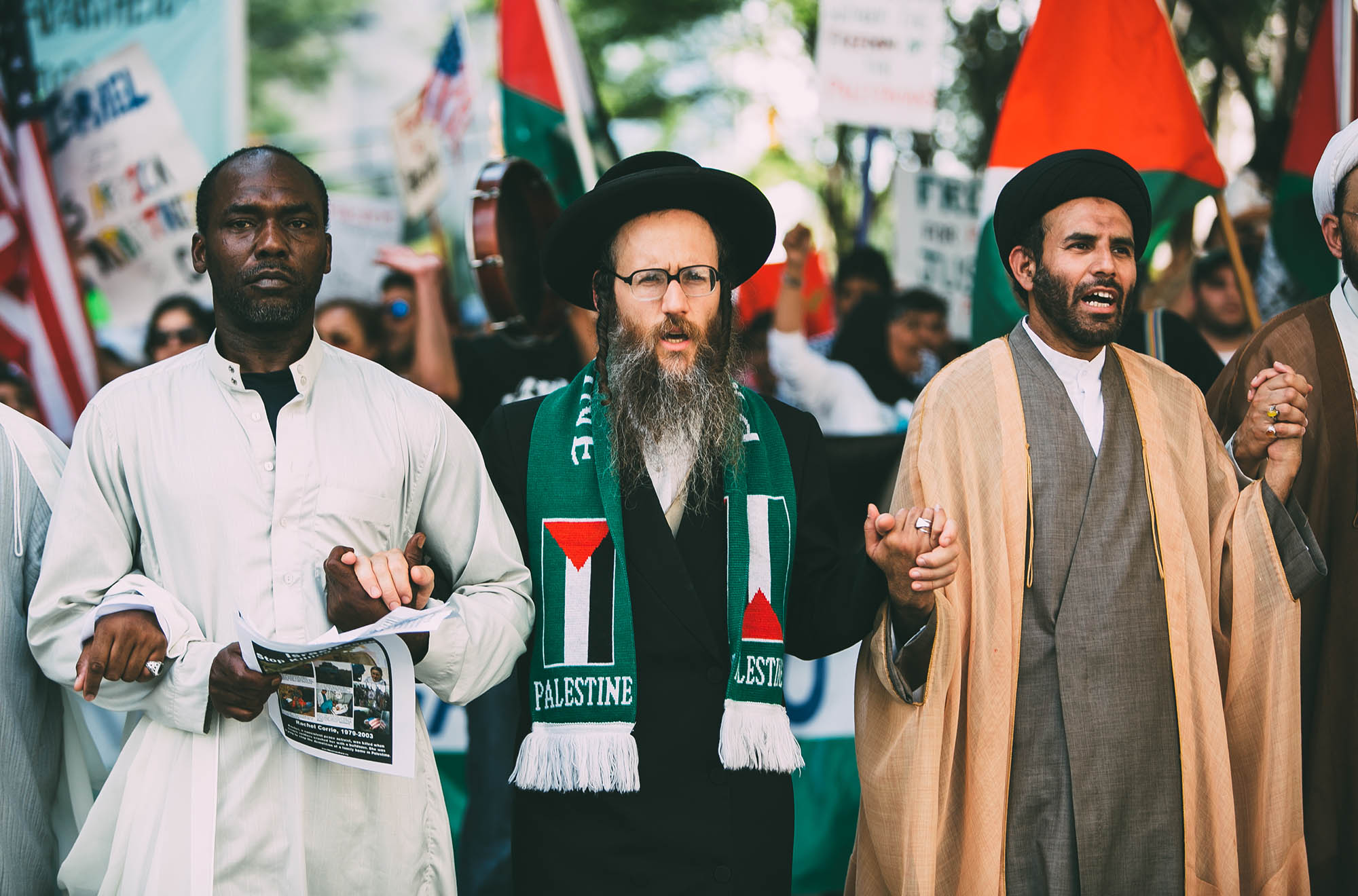The world’s Muslims fall into two major camps, Sunni and Shia, sometimes likened to Christianity’s Catholics and Protestants. But the similarity is superficial. In terms of the world’s total Muslim population, Sunnis and Shias disagree over what percentage each group owns, with Sunnis accounting for 80-90% of the total and Shias 10-20%.
After Muhammad’s death in 632 CE, the struggle over who should succeed him made Islam’s next half-century very turbulent. In fact, three of Muhammad’s first four successors were assassinated. The Sunni-Shia division goes back to that early conflict.
Ali, Muhammad’s cousin and son-in-law, was chosen by the larger community as his fourth successor. But a minority claimed Muhammad had appointed Ali and his family line to succeed him, and that Ali would have led from the first if powerful families hadn’t sidelined him. That minority came to be known as the Shia, from the Arabic shicat cAli, or “partisans of Ali.” The Sunnis, their opponents, countered that, by letting a majority of Muslim leaders decide, they followed Muhammad’s sunna, or “way” of choosing.[1]
After Ali’s assassination in 661, the split only widened. In 670, Ali’s first son Hassan was murdered. Then in 680, in what both sides agree was an act of treachery, the Sunni caliph’s representative beheaded Ali’s remaining son, Husayn, at Karbala, in modern-day Iraq. He killed most of Husayn’s companions and family with him, his infant son Ali included.
Given this history, Sunnis and Shias naturally diverge on various theological and practical issues. One defining practice of Twelver Shias, for example, is their annual ritual commemoration of Husayn and his companions’ martyrdom. The Sunni-Shia split is also marked by sharp disagreement over

- How the schism unfolded, including which characters are heroes
- Which hadith are accepted
- Matters of law, on such things as marriage and divorce
- The authority of Muhammad’s rightful successors, whether caliphs (Sunni) or imams (Shia)[2]
- How history will play out and the role of the Mahdi, an eschatological deliverer from external evils
But despite their many differences, Sunnis and Shias agree on the centrality of Muhammad and the Qur’an to their faith. Hence, they hold similar views on most of the basics:
- Islam’s “five pillars,” or essential practices—the creed, ritual prayers, almsgiving, Ramadan and pilgrimage to Mecca
- The prophets and scriptures before Muhammad
- The nature of the believer’s relationship to God[3] [3]
- That salvation is earned by good deeds and loyalty to the Muslim community
- The Last Day’s vital importance

The news media often report on violence between Sunnis and Shias in places like Iraq and Pakistan. Such violence is tragic and must not be minimized, especially with the threat of a nuclearized Iran (Shia) and Saudi Arabia (Sunni) before us. But Muslims who complain that these reports distort the picture are partly right because our news media’s business model “both assumes and heightens polarization,”[4] and most Sunnis and Shias coexist peaceably. It’s equally true, however, that Sunni-Shia rivalry will remain a destabilizer wherever either sect is considered a threat in the Muslim world. That is, as long as both versions of Islamism—Shia and Sunni—are alive and well.[5] And neither currently shows any sign of abating.
[1] Both views were seen in pre-Islamic Arabia, even as both are still present in Saudi Arabia’s tribes today. In a majority of tribes, the clans were represented by a council of leaders which chose the tribal sheikh. A minority of tribes, by contrast, took a hereditary approach to tribal leadership. Thus, it seems that pre-Islamic Arabia’s minority (who felt tribal succession should be hereditary) became Islam’s minority (Shia), after Muhammad’s death.
[2] Sunnis view their caliphs as divinely ordained political leaders, while Shias also consider their imams infallible guides in spiritual matters.
[3] This applies only superficially to the Ismaili Shia (Seveners). In fact, the two largest Shia sects (Twelvers and Fivers) arguably have more in common theologically with Sunnis than with Ismailis.
[4] Ross Douthat, “How Trump Hacked the Media Right Before Our Eyes,” New York Times. https://www.nytimes.com/2018/03/21/opinion/trump-facebook-cambridge-analytica-media.html?action=click&module=Opinion&pgtype=Homepage Accessed March 21, 2018.
[5] Islamism is the attempt to return to Islam’s militantly political roots.




The Twelver Shia believe and follow the 12 Kings (Rulers) God promised Abraham in Ishmael’s lineage in Genesis – 17:20
“And as for Ishmael, I have heard you: I will surely bless him; I will make him fruitful and will greatly increase his numbers. He will be the father of twelve rulers, and I will make him into a great nation.”
These rulers are also believed to be the 12 Star Crown worn by the Woman clothed in the Sun with the Moon in her feet mentioned in Revelation 12, the last of those Rulers will Rule All Nations with an Iron Scepter.
The names Fiver, Sevener and Twelver relate to the number of imams in the line (beginning with Ali) each sect recognizes. Distributed mainly in Iran, the Twelvers are the largest Shia sect. They are also called Jafari Shias, named after the sixth imam, Jafar al-Sadiq (d. 765 CE), the preemient Twelver legal scholar.
Thanks for your helpful post. Can you please briefly explain who the Twelver Shias are, in relation to the other Shia sects?